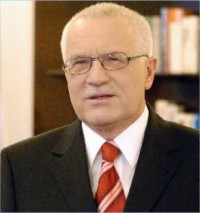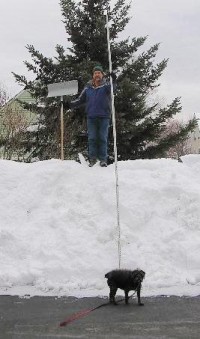
|
Mar 05, 2008
The 2008 International Conference on Climate Change
By Joseph D’Aleo, CCM
The opening remarks of the 2008 International Conference on Climate Change by Joseph L. Bast, President of the Heartland Institute site can be seen here. It kicked off the best climate conference I have attended in my 30 years in the professional societies. The two day meeting featured over 100 excellent presentations made by scientists from Australia, Canada, England, France, Hungary, New Zealand, Poland, Russia, Sweden, and of course the United States. They came from the University of Alabama, Arizona State, Carleton, Central Queensland, Delaware, Durham, and Florida State University, George Mason, Harvard, The Institute Pasteur in Paris, James Cook, John Moores, Johns Hopkins, and the London School of Economics, the University of Mississippi, Monash, Nottingham, Ohio State, Oregon State, Oslo, Ottawa, Rochester, Rockefeller, and the Royal Institute of Technology in Stockholm, the Russian Academy of Sciences, Suffolk University, the University of Virginia, Westminster School of Business (in London), and the Wharton School at the University of Pennsylvania. There were keynote addresses by Pat Michaels, Bob Balling, Ross McKitrick, Bill Gray, Tim Ball, Fred Singer, Roy Spencer and John Stossel. All were excellent and very well received. The most inspirational moments though were thanks to an address by the very courageous President of the Czech Republic, Vaclav Klaus, the only head of state of a major nation who “gets it”. A Ph.D. Economist by education, he was first elected president of the Czech Frepublic in 2003.

The text of his speech will be posted in its entirety on the Heartland website shortly but here are a few highlights.
“What I see in Europe (and the U.S. and other countries as well) is a powerful combination of irresponsibility, of wishful thinking, of implicit believing in some form of Mathusianism, of a cynical approach of those who themselves are sufficiently well off, together with the strong possibility of changing the economic nature of things through a radical political project.
As a politician who personally experienced communist central planning of all kinds of human activities, I feel obliged to bring back the already forgotten arguments used in the famous plan versus market debate in the 1930s in economic theory (between Mises and Hasyek on the one side and Lange and Lerner on the other), the arguments we have been using for decades - till the moment of the fall of communism. Then they were quickly forgotten. The innocence with which the climate alarmists and their fellow travelers in politics and mediia now present and justify their ambitions to mastermind human society belongs to the same “fatal conceit.” To my great despair, this is not sufficiently challenged neither in the field of social sciences, nor in the field of climatology. Especially the social sciences are suspicously silent.
We have to restart the discussion about the very nature of government and about the relationship between the individual and society. Now it concerns the whole mankind, not just the citizens of one particular country. To discuss this means to look at the canonically structured theoretical discussion about socialism (or communism) and to learn an uncompromising lesson from the inevitable collapse of communism 18 years ago. It is not about climatology. It is about freedom. This should be the main message of our conference.”
Icecap Note: The attendees left the conference with renewed vigor and enthusiam and many new contacts and ideas. Many told of countless others who wanted to join them but could not get time off from their jobs, could not afford the trip to New York City, or feared their attendance might affect their employment, a sad state of affairs. As I have noted this is not the sum total of the Climate Realists but the tip of the iceberg of what is very likely a silent majority of scientists in climatology, meteorology and allied sciences who do not endorse what is said to be the consensus position. There was a variety of opinions as there should be in science and all were tolerated. There was no group think or stagnant thinking as we find at other so called Climate Conferences. We thank the Heartland and the many other co-sponsors for their efforts in making this possible and so successful.
See conference summaries here, here, here.
Mar 04, 2008
Compilation of the Arguments That Irrefutably Prove that Climate Change is Driven by Solar Activity
Dr. Gerhard Lobert, Physicist. Recipient of The Needle of Honor of German Aeronautics
As the glaciological and tree ring evidence shows, climate change is a natural phenomenon that has occurred many times in the past, both with the magnitude as well as with the time rate of temperature change that have occurred in the recent decades. The following facts prove that the recent global warming is not man-made but is a natural phenomenon.
1. In the temperature trace of the past 10 000 years based on glaciological evidence, the recent decades have not displayed any anomalous behavior. In two-thirds of these 10,000 years, the mean temperature was even higher than today. Shortly before the last ice age the temperature in Greenland even increased by 15 degrees C in only 20 years. All of this without any man-made CO2 emission!
2. There is no direct connection between CO2 emission and climate warming. This is shown by the fact that these two physical quantities have displayed an entirely different temporal behavior in the past 150 years. Whereas the mean global temperature varied in a quasi-periodic manner, with a mean period of 70 years, the CO2 concentration has been increasing exponentially since the 1950’s. The sea level has been rising and the glaciers have been shortening practically linearly from 1850 onwards. Neither time trace showed any reaction to the sudden increase of hydrocarbon burning from the 1950’s onwards.
3. The hypothesis that the global warming of the past decades is man-made is based on the results of calculations with climate models in which the main influence on climate is not included. The most important climate driver (besides solar luminosity) comes from the interplay of solar activity, interplanetary magnetic field strength, cosmic radiation intensity, and cloud cover of the Earth atmosphere. Read more here.
Feb 29, 2008
Australian Ski Resorts See Summer SNOW - ‘We have barely had a summer this year’
By NEWS.com.au
Done and dusted ... summer ends with snow at NSW ski resort Perisher Blue. Forecasters predict a bumper ski season for 2008. The final day of summer in the Snowy Mountains has taken on a wintry chill after snow fell last night at the ski resorts of Perisher Blue and Thredbo. A light dusting of snow blanketed the NSW ski resorts overnight as temperatures dropped to a low of minus 3.8 degrees Celcius at Perisher and minus 3 degrees at Thredbo. Intermittent light snow flurries continued to fall into the morning on Mount Perisher.
Weather forecasters are already predicting a bumper snow season for 2008, according to resort management. Temperatures are expected to remain low with persistent precipitation throughout winter. “We have barely had a summer this year,” said Gary Grant, Perisher Blue’s general manager of marketing. “It’s felt as though it’s remained cold since the end of the 2007 season, apart from a few warm days, there air has always had a nip in it.”
Icecap Note: Last Year, Australian ski areas had the best ski season in 17 years. See this story.
Feb 28, 2008
Snow Records Falling in New England
By Joseph D’Aleo, CCM
Earlier we reported places like Madison, Wisconsin in the midwest set new all-time snowfall records and appeared to be heading for 100 inch seasons. Though not as cold as the Midwest this winter, the northern half of New England has been just as snowy, typical in both cases and places of La Nina.
Burlington Vermont has now (as of February 28) exceeded 100 inches for the season (107.1 inches). For the three month winter season, Burlington set a record with 103.4 since December 1. Records extend way back to 1884. The previous record was set in the incredibly snowy strong La Nina winter of 1970/71 which had 96.9 inches during the December through February period. That year they went on to add 45.7 inches more in March and April. No reason to expect the snow to stop coming this year.
A Snowy Vermont press release yesterday noted the abundant snowfall that has blanketed Vermont’s ski areas all season has continued at a record-breaking pace with snowfall totals that have already shattered the 50-year-old mark for the snowiest February in Vermont’s history. And, the copious snow storms this season have already brought this winter’s accumulation into the top 10 all-time snowiest ski and ride seasons on record. “The theme for this season’s ski and ride season has definitely been an abundance of snow with the best possible timing,” said Parker Riehle, president of Ski Vermont. “Just about every weekend and holiday vacation period this season has greeted skiers and riders with enormous amounts of freshly fallen snow, adding to the already considerable snow pack.”
Central New England too has been snowy. Concord, New Hampshire also has now exceeded 100 inches for the season with another light snow event last night. Thery are now at 102.2 inches for the season. They are closing in on the all-time record of 122 set in 1874. In this New Hampshire Public Radio story, they report the heavy snow is causing problems for many New Hampshire towns and cities.

Photo courtesy of Ric Werme in Penacook, straddling the northern edge of Concord
While northern areas have been covered with white all winter, southern areas of New England which had a 100 inch El Nino season a few years ago have had mostly rain this La Nina year. Both provide more evidence other factors like the oceans (and ultimately the sun) control our climate not man.
Update: USATODAY did a story on the record snows this morning. Note ALSO we have just heard from Steamboat Springs ski area in Colorado that they for the first time ever have had over 100 inches in each of the three winter months of December, January and February.
Feb 28, 2008
Snow Disaster Leaves 1.6 mln People Frostbitten in NW China Province
www.chinaview.cn
Severe snow disasters have left 1.65 million people snowblind and frostbitten, 500,000 livestock and wildlife dead and 3.1 million others on verge of starvation in Tibetan prefectures of northwestern Qinghai Province. Since October last year, consecutive low temperature had gripped the province. The temperature plunged to minus 36.3 degrees centigrade, the record lowest in January in the province, said the provincial meteorological bureau.
In Yushu, Guoluo and Huangnan Tibet Autonomous Prefectures, most of the grassland was covered by snow, 16 to 32 cm thick, which had brought great losses to local animal husbandry. In the disaster-stricken prefectures, 130,000 people had run out of fuels, 350,000 people in need of food and 110,000 others short of warm clothes or quilts, said the provincial government. Currently, the province’s task was to evacuate 11,000 people of 2,000 herdsmen households for the local conditions were not fit to live any longer. Winter storms have also plagued southern China since mid-January, leading to widespread traffic jams, structural collapses, blackouts and crop losses in 19 provinces, leaving 129 people dead and causing 151.65 billion yuan of losses, according to the Ministry of Civil Affairs.
|
|
|
|




